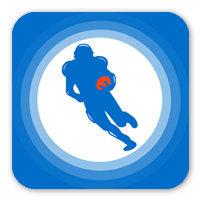Fantasy Baseball ADPs for All Platforms
What is ADP? In fantasy baseball, ADP is Average Draft Position. ADP is the average place where players are getting selected in fantasy baseball drafts across many leagues.
ADP is important in understanding fantasy baseball player values, and where to expect a player to be drafted. It's also important to check ADPs for the platform you will host your league on as ADPs may vary between the major providers.
As you will see below, the same player can have a very different ADP on different sites, which may change your draft strategy and where to target or avoid certain player on draft day based on their ADPs.
Fantasy Baseball ADPs - Average Draft Position
Fantasy Baseball ADPs Table
Introduction to Fantasy Baseball Average Draft Position (ADP)
During your fantasy baseball draft, each roster will be given a set number of picks to fill their positions with.
However, when considering the hundreds of players in Major League Baseball (MLB), it can become quite daunting to decide who to draft.
Utilizing average draft position (ADP) can help you not only straighten out your draft, but also identify the best options available at your draft position. This calculates the average position a given player is drafted in other fantasy leagues.
This tool is crucial in understanding a player’s value in comparison to others. An option with a lower average is typically viewed as a high-end asset that will likely be drafted early in the first round. However, an individual holding a much higher mark around 150 can typically be found in the middle (or at the end of the draft, depending on league size).
It is also important to note that each fantasy platform will typically have varying averages due to minor differences in scoring systems and potential eligibility. That is why it is crucial to understand your league’s scoring settings and reference the correlated ADP during your draft.
Below is a table of varying ADPs of the MLB pool, from several platforms, including NFBC, Yahoo, Fantrax, CBS, and RTS. There is also a column on the right of the table that includes the average ADP, which provides a general sense of their perceived value within the broader context of fantasy baseball.
How is ADP Calculated
A player’s average selection on a specific platform is calculated by adding their draft positions in each draft and dividing them by the number of occurrences they were drafted. For example, the top hitter, Los Angeles Dodgers designated hitter Shohei Ohtani, has a mark of 1.0, indicating that he was selected with the first overall pick on average across all platforms. However, in the No. 2 spot, Kansas City Royals infielder Bobby Witt Jr. holds a 2.26 average, meaning there were occurrences he fell to the third overall pick.
As the draft continues, fantasy managers will notice a greater disparity between averages and spots in the draft. In the later rounds, there is much greater fluidity, and options with more perceived upside are typically pushed up draft boards later in the draft, in relation to their expected draft position.
Hitters with multi-position eligibility, such as 1B, 2B, 3B, SS, and OF, can provide flexibility and value in fantasy drafts. Multi-position hitters such as Willi Castro (MIN), who can play at both corner infield (CI (1B 3B)) or middle infield (MI (2B SS)), will also likely be pushed up draft boards.
Additionally, hitters with only DH or UT eligibility are often pushed down draft boards.
In points formats, starting pitchers (SP) often carry lower averages while relief pitchers (RP) carry high average positions given the scoring system. As a result, some leagues will simply clarify both types of pitchers (SP, RP) as "P."
Lastly, some formats have additional eligibility in the outfield, specifically for left field (LF) and right field (RF). Specific league settings, such as this, can significantly impact a projected draft position.
Notable teams like LAD, NYY, TOR, SEA, MIL, LAA, HOU, NYM, SD, ATL, TEX, and SF have hitters with lower averages, meaning they will be selected earlier in drafts, due to their ability to consistently contribute counting stats.
As a result, several veteran options who do not carry much perceived upside will likely have a much higher average position and fall to the later rounds.
Using ADP as a Draft Resource
While it is helpful to use this as a guide to determine a player’s overall expected value, it is also crucial to understand your league’s settings. The platforms in this chart have varying league sizes and scoring formats, which can significantly influence a player’s mark.
The most significant difference can be observed when comparing catcher (C) ADPs. On the NFBC platform, most settings utilize two catchers in a starting lineup. As a result, catchers are typically pushed up draft boards much higher than they would in a standard CBS league. For example, Milwaukee Brewers catcher William Contreras carries a much lower 35.0 on the NFBC while he holds a 43.0 on Yahoo.
Catcher Cal Raleigh (SEA C) also carries a much lower 77.0 on NFBC compared to the 108.0 he holds on Yahoo, which typically hosts one-catcher formats. While managers in two-catcher leagues have to pay a higher price to acquire him on this specific site, he is worth the investment as he provides significant value in two-catcher formats.
Managers in two-catcher leagues should keep a close eye on catchers who can also play in other positions. Salvador Perez (C 1B) will likely be selected much earlier than his ADP in deeper formats due to his ability to play both catcher and first base.
Using ADP to find Value Picks
Another way to utilize this tool as an advantage is by selecting top spot value picks during the draft process. There are many times during your fantasy draft when you will see high-end options fall past their ADP. By referencing their ADP, you can identify this and secure a top option at a significantly lower price compared to other formats.
This will play a significant role in the regular season, increasing the value of your team. You will then be able to use this value to make trades and strengthen other positions on your roster. Even if you already have a high-end first baseman (1B) like Bryce Harper on your roster, if Pete Alonso (1B) slips well past his ADP, it would be a wise decision to select him simply due to the increased value your team would have at the start of the season.
This could provide a valuable trading opportunity to strengthen another weaker position.
In addition, this tool can also help you spot when specific selections occur too early in the draft. If you see a player with an average of 25.0 being selected 13th overall, that manager likely decreased their potential value of that pick. While that player could still have a successful campaign, they likely could have selected them with their next pick in the following round if they were aware of their average.
Using ADP as a Predictive Tool
Lastly, this can also be used as an excellent predictive tool during your draft. For example, if you are waiting to make your next selection, you can already have an idea of which options will be available at your next selection by utilizing this tool. This will allow you to plan and prepare multiple rounds ahead of your league mates and easily identify value picks.
While it is important not to treat it as the end-all during your draft, your league may have specific scoring settings that could slightly alter projections. It is a strong foundation to utilize. It will provide invaluable insights on which players are projected to be available on your next pick, and spot risers and fallers
With this tool, you will never find yourself reaching for a player that you could select rounds later or, conversely, missing out on the top value pick.
ADP Best Practices for Fantasy Baseball
1. Navigate and compare differences in your fantasy baseball cheat sheet’s rankings and fantasy baseball ADP before your drafts.
2. In most cases, avoid picking players multiple rounds before their fantasy baseball ADPs. You likely are "overpaying" for that player.
3. Target fantasy baseball players who slip well beyond their ADP, barring an obvious reason for the fall. This helps you build value during fantasy baseball drafts.
4. Estimate whether your targeted fantasy baseball player could be available at your next draft pick. It's important to look ahead and plan ahead, and also to pull the trigger if you don't think that player will make it back to you by your next pick.
5. Instead of simply picking in order of your preferred fantasy baseball rankings, use ADP as a resource before and during draft day. It will help you get a feel for how other drafters in your league may lean when their picks roll around, and help you plan your next few picks based on that.





 RADIO
RADIO












